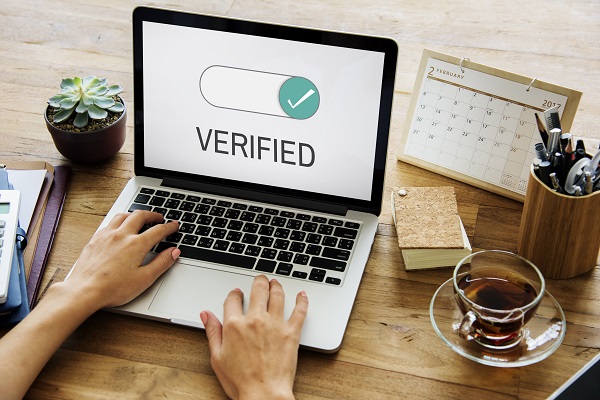6 Ways To e-Verify Your Income Tax Returns Online

If you have already filed your Income Tax Returns (ITR), now you need to verify it. The tax department will process your ITR only when it’s verified. Besides, you can get refunds only after the submission and verification of the income tax return. This post tells you how to e-verify your income tax returns. Read on!
6 Ways To e-Verify Income Tax Returns
There are multiple methods through which you can process your ITR verification. To initiate the process, you need to sign in to your account through the income tax portal and choose the e-Verify Return option.
Next, you need to select any of the following modes to e-verify ITR:
Using Aadhaar OTP
To e-verify your ITR via Aadhaar, you need to make sure your mobile number is linked with your Aadhaar number. Additionally, your PAN needs to be linked with Aadhaar. Follow the pointers below to complete the process:
- From the e-verify section, choose the relevant option that allows you to e-verify through an OTP on the phone number registered with Aadhaar.
- Your screen will display the pop-up. You have to select a tick box stating that you agree to validate your Aadhaar details. Next, press ‘Generate Aadhaar OTP’.
- Your registered mobile number will receive a six-digit OTP through SMS.
- Furnish your OTP in the required field and press ‘Submit’.
After submission, your ITR will be successfully verified. Almost all taxpayers opt for this method for ITR verification.
Using Internet Banking
Individuals who use the net banking service of their bank account can e-verify ITR online by following these steps:
- Under ‘e-Verify’, choose the net banking option and press ‘Continue’.
- Next, enter the bank via which you wish to e-verify your tax return and press ‘Continue’.
- Now, you have to sign in to your bank account’s net banking. Under the ‘Tax’ tab, choose ‘e-Verify’.
After this, you’ll be taken back to the e-filing website. Select the relevant income tax return form and press ‘e-verify’. Your income tax e-verification procedure will be complete.
Using Bank Account
For ITR verification through a bank account, you should have a pre-validated bank account for generating EVC in ITR. It is mandatory to pre-validate your bank account to receive a tax refund.
This process will generate an EVC, and you’ll receive it on your email ID and mobile number registered with the EVC-enabled and pre-validated bank account. You just need to furnish your EVC and press ‘e-verify’.
Also Read
Using Demat Account
Verification of income tax returns through a Demat account will be the same as verification through a bank account. However, in this case, you will receive the EVC on your email ID and mobile number registered with your EVC-enabled and pre-validated Demat account.
Using Bank ATM
This is another procedure to generate EVC. Only certain banks, such as Kotak Mahindra Bank, IDBI Bank, ICICI Bank, SBI, Central Bank of India, Axis Bank and Canara bank, offer this service. You just need to visit the bank’s ATM and follow the below-mentioned procedure:
- Swipe the ATM card and type the ATM PIN.
- Next, generate the EVC to file ITR.
- You will receive an EVC on your email ID and mobile number registered with the website. Make sure your PAN is registered with your bank.
- Now, sign in to your e-filing account and on the e-verify page, to confirm that you have an EVC. Enter your EVC and press ‘e-verify’.
In case your books of accounts aren’t audited, you can consider the above-mentioned procedures to verify ITR.
Using Digital Signature Certificate
In case your books of accounts are audited, you can e-verify your ITR through a DSC (Digital Signature Certificate)by following these steps:
- From the e-verify page, choose the ‘I would like to e-Verify using Digital Signature Certificate (DSC)’ option.
- Next, under the ‘Verify with Digital Signature Certificate (DSC)’ section, select ‘Click here to download emsigner utility’.
- Once you download the emsigner utility, visit the e-filing page.
- On the ‘Verify with Digital Signature Certificate (DSC)’ page, choose ‘I have downloaded and installed emsigner utility’ and press the ‘Continue’ button.
- In the next screen, choose ‘Provider’, ‘Certificate’ and provide your password. Now, press the ‘Sign’ button.
You will get an SMS on your mobile number and email ID registered with the e-filing website. This will confirm the completion of income tax verification.
Final Word
Income Tax Return e-verification facility is available for both unregistered and registered users on the e-filing website. You can e-verify Income Tax Returns using any of the various methods applicable. In addition, you may e-verify any other IT-based requests, responses, services and submissions on the e-filing portal to finish the respective procedures successfully.
FAQs on How To e-Verify Income Tax Returns
- Why should I e-verify my ITR?
You require verifying your income tax returns to finish the return filing procedure. The IT Department will treat an ITR as invalid if you do not verify it within the stipulated period. E-verification is an instant and convenient mode to verify your tax returns.
- What are the other IT-related services that I can verify?
You may e-verify multiple services, responses and requests to finish the respective procedures, including the verification of the following:
- Uploading income tax returns in bulk by e-Return intermediaries (ERIs)
- Service requests submitted by ERIs
- Condonation of delay in filing tax returns post due date
- Rectification requests
- Refund reissue requests
- E-proceedings
- Income tax forms (via offline utility/online portal)
- What are the advantages of e-verification?
The following are the benefits of e-verification:
- ITR verification happens promptly, which mitigates the delay in transit of tax return verification.
- You don’t need to send a physical copy of the ITR verification to CPC, Bangalore.
- You can e-verify through any of the several methods─DSC, net banking, Demat account, EVC (through a pre-validated bank account) and Aadhaar OTP.
- What does EVC mean?
An EVC (Electronic Verification Code)denotes a ten-digit alphanumeric code, which you will receive on your email ID and mobile number registered with the Demat account/bank account/e-filing portal (as the case can be) during the e-verification process. It’ll be valid for 72 hours from the time of its generation.
- I filed my ITR over 120 days ago. Can I still verify my ITR online?
Yes, you will have to submit a service request for condonation of delay by furnishing a relevant reason for the delay. After that, the Income Tax Department will approve your condonation request, and your return verification will be successful.
Disclaimer
This article is solely for educational purposes. Navi doesn't take any responsibility for the information or claims made in the blog.
Read More on Income Tax Act

What is Form 26QB for TDS? How to Download and Submit it?
While purchasing a property, buyers are liable to pay various taxes. The Finance Act, 2013 made TDS... Read More »PF Withdrawal Rules 2023 – Rules, Documents Required and Types
EPF/PF Withdrawal Employees’ Provident Fund (abbreviated as EPF) is a popular retirement sav... Read More »Stamp Duty and Property Registration Charges in Delhi 2023
It is compulsory for property buyers in the Capital to pay stamp duty in Delhi during property regi... Read More »Income Tax Return – Documents, Forms and How to File ITR Online AY 2023-24
In India, it is mandatory for all taxpayers who earn more than the basic tax exemption limit to fil... Read More »What is Section 80CCD – Deductions for National Pension Scheme and Atal Pension Yojana
The Income Tax Act provides a number of deductions and tax benefits to taxpayers, so they can strat... Read More »Tax on Dividend Income: Sources, Tax Rate and TDS on dividend income
What are Dividends? Companies may raise funds for running their operations by selling equity. Th... Read More »Section 112A of Income Tax Act: Taxation on Long-Term Capital Gains
What is Section 112A? Section 112A of the Income Tax Act was announced in Budget 2018 to replace... Read More »Section 206AB of Income Tax Act: Eligibility And TDS Rate
Section 206AB was introduced in the Finance Bill 2021 as a new provision pertaining to higher deduc... Read More »What is a Credit Note in GST – Example, Format and Steps
A GST Credit Note is mandatory for any GST-registered supplier of goods or services. As a supplier,... Read More »Exemptions and Deductions Under Section 10 of Income Tax Act
What Is Section 10 of the Income Tax Act? Section 10 of the Income Tax Act, 1961 provides tax-sa... Read More »Section 57 of the Income-tax Act – Income from Other Sources
It is quite likely that many entities - individuals as well as businesses - have multiple sources o... Read More »What is Dearness Allowance? – Types, Calculation, and Current Rate
What is Dearness Allowance? Dearness Allowance Meaning - Dearness Allowance (DA) is an allowance... Read More »Top 10 Chit Fund Schemes in India in 2023
Chit funds are one of the most popular return-generating saving schemes in India. It is a financial... Read More »10 Best Gold ETFs in India to Invest in April 2023
Gold ETFs or Gold Exchange Traded Funds are passively managed funds that track the price of physica... Read More »10 Best Demat Accounts in India for Beginners in 2023
Creation of Demat accounts revolutionised the way trades were conducted at the stock exchanges. It... Read More »20 Best Index Funds to Invest in India in April 2023
What is an Index Fund? An index fund is a type of mutual fund or exchange-traded fund (ETF) that... Read More »Best Arbitrage Mutual Funds to Invest in India in April 2023
Arbitrage funds are hybrid mutual fund schemes that aim to make low-risk profits by buying and sell... Read More »10 Best SIP Plans in India to Invest in April 2023
What is SIP? SIP or Systematic Investment Plan is a method of investing a fixed amount in ... Read More »10 Best Corporate Bond Funds in India to Invest in April 2023
Corporate bond funds are debt funds that invest at least 80% of the investment corpus in companies ... Read More »10 Best Bank for Savings Account in India [Highest Interest Rate 2023]
Savings account is a type of financial instrument offered by several banks. It lets you safely depo... Read More »
































